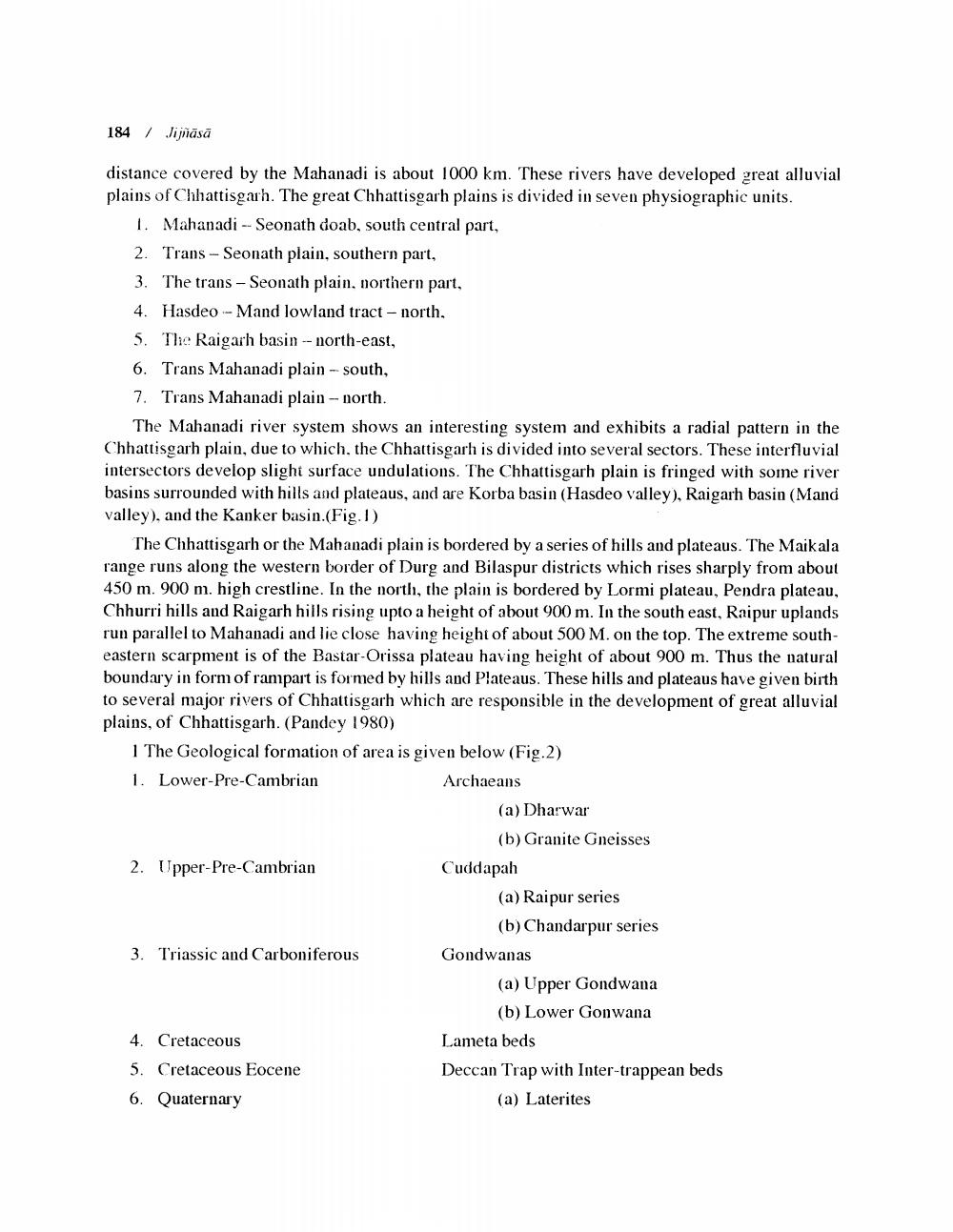________________
184
/
Jijāsā
distance covered by the Mahanadi is about 1000 km. These rivers have developed great alluvial plains of Chhattisgarh. The great Chhattisgarh plains is divided in seven physiographic units.
1. Mahanadi -- Seonath doab, south central part, 2. Trans-Seonath plain, southern part, 3. The trans - Seonath plain, northern part, 4. Hasdeo - Mand lowland tract-north, 5. The Raigarh basin -- north-east, 6. Trans Mahanadi plain -- south, 7. Trans Mahanadi plain --north.
The Mahanadi river system shows an interesting system and exhibits a radial pattern in the Chhattisgarh plain, due to which the Chhattisgarh is divided into several sectors. These interfluvial intersectors develop slight surface undulations. The Chhattisgarh plain is fringed with some river basins surrounded with hills and plateaus, and are Korba basin (Hasdeo valley), Raigarh basin (Mand valley), and the Kanker basin.(Fig. 1)
The Chhattisgarh or the Mahanadi plain is bordered by a series of hills and plateaus. The Maikala range runs along the western border of Durg and Bilaspur districts which rises sharply from about 450 m. 900 m. high crestline. In the north, the plain is bordered by Lormi plateau, Pendra plateau, Chhurri hills and Raigarh hills rising upto a height of about 900 m. In the south east, Raipur uplands run parallel to Mahanadi and lie close having height of about 500 M. on the top. The extreme southeastern scarpment is of the Bastar-Orissa plateau having height of about 900 m. Thus the natural boundary in form of rampart is formed by hills and Plateaus. These hills and plateaus have given birth to several major rivers of Chhattisgarh which are responsible in the development of great alluvial plains, of Chhattisgarh. (Pandey 1980)
1 The Geological formation of area is given below (Fig.2) 1. Lower-Pre-Cambrian
Archaeans
(a) Dharwar
(b) Granite Gneisses 2. Upper-Pre-Cambrian
Cuddapah
(a) Raipur series
(b) Chandarpur series 3. Triassic and Carboniferous
Gondwanas
(a) Upper Gondwana
(b) Lower Gonwana 4. Cretaceous
Lameta beds 5. Cretaceous Eocene
Deccan Trap with Inter-trappean beds 6. Quaternary
(a) Laterites




